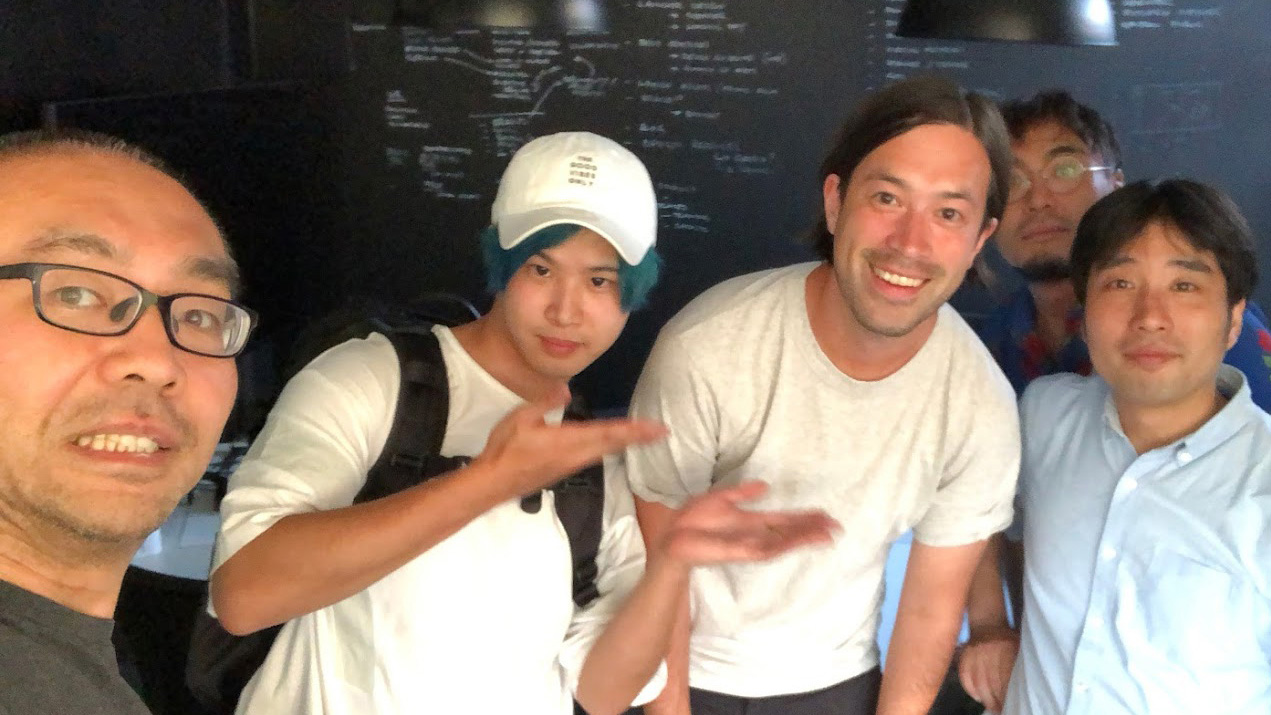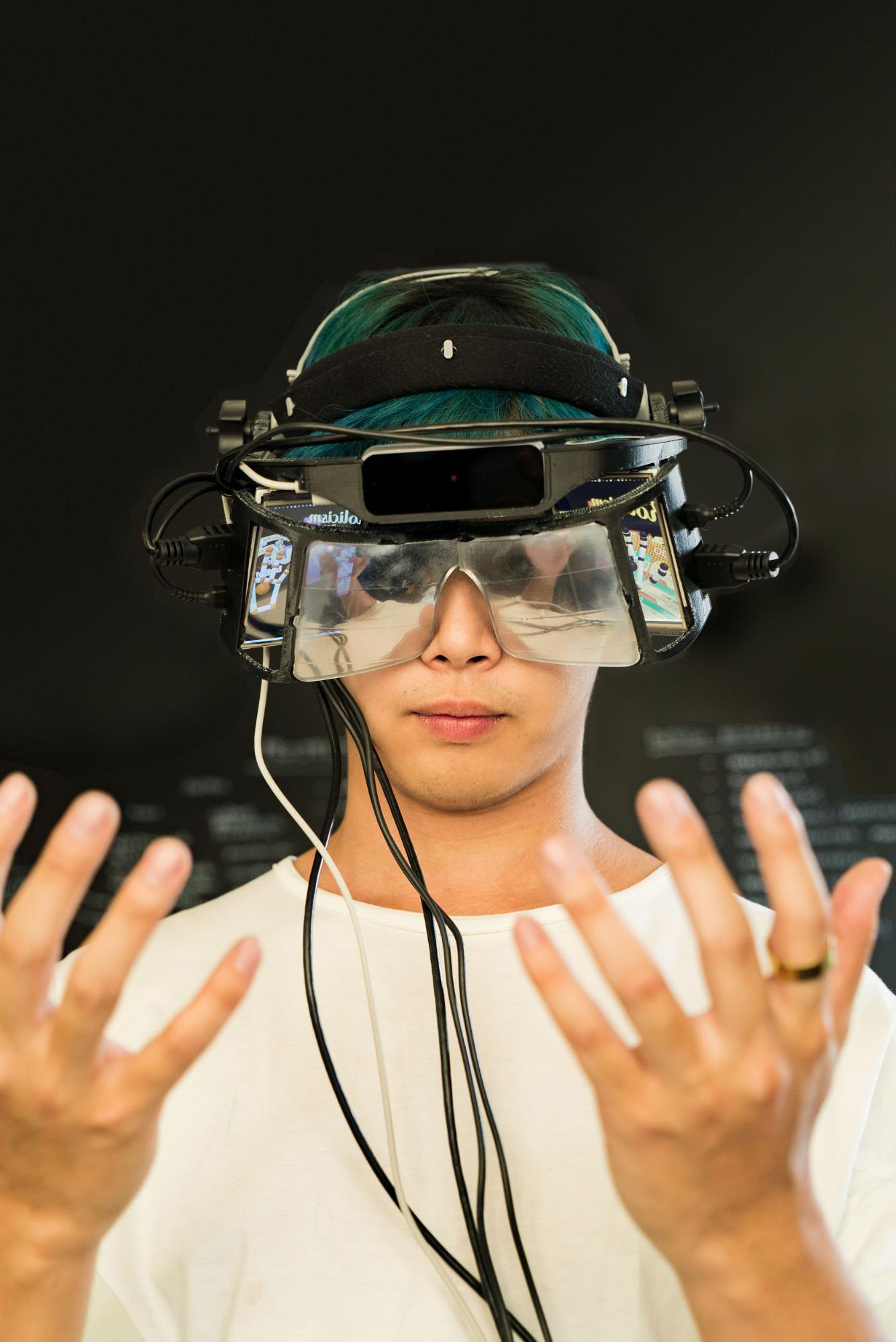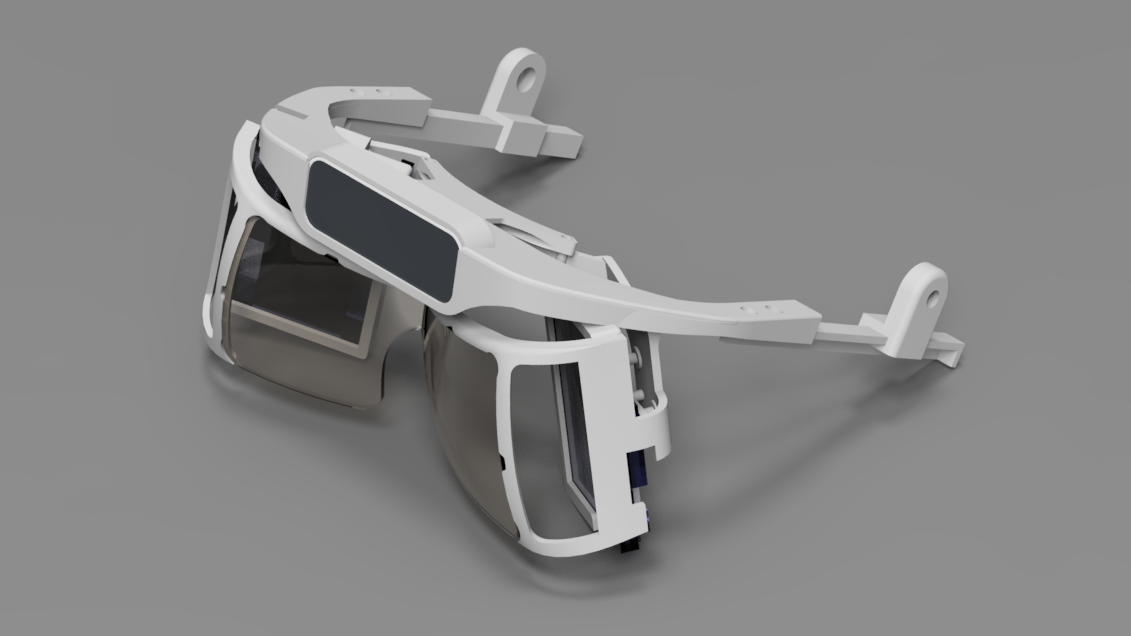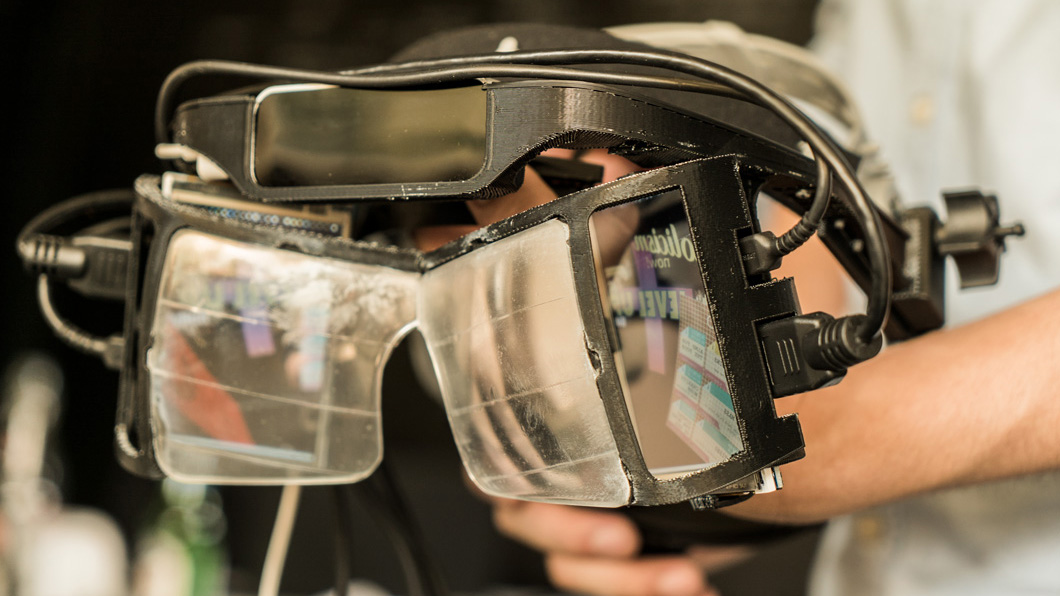Earlier this summer, we open sourced the design for Project North Star, the world’s most advanced augmented reality R&D platform. Like the first chocolate waterfall outside of Willy Wonka’s factory, now the first North Star-style headsets outside our lab have been born – in Japan.
Several creative developers and open hardware studios are propelling open source efforts, working together to create a simplified headset based on the North Star design. Developer group exiii shared their experience on their blog along with a build guide, which uses off-the-shelf components. Psychic VR Lab, the developers of VR creative platform STYLY, took charge of the software.

Masahiro Yamaguchi (CEO, Psychic VR Lab), God Scorpion (Media artist, Psychic VR Lab), Keiichi Matsuda (VP Design, Leap Motion), Oda Yuda (Designer), Akihiro Fujii (CTO, Psychic VR Lab). Not pictured: Yamato Kaneko (COO, Product Lead, exiii), Hiroshi Yamaura (CEO, exiii).
Together, Psychic VR Lap and exiii have been showcasing their work at developer events in Tokyo. Recently we caught up with them.
 Alex Colgan (Leap Motion): What inspired you to build a North Star headset?
Alex Colgan (Leap Motion): What inspired you to build a North Star headset?
Yamaura: Our company originally started from 3D printing a bionic hand, and we open-sourced that project. So we’re generally very passionate about open-source projects. Our main focus currently is to create really touchable virtual reality experiences, but of course what we see in the future is augmented reality in the world, where virtual objects and physical objects coexist together. We want to make everything touchable, just like real objects.
God Scorpion: I have a mixed reality team that is developing some ideas combining fashion, retail, performance and art. We’ve been working with Vive and Hololens, and wanted to see what else would be possible with North Star.
Akihiro Fujii: The North Star official demos and HYPER-REALITY film by Keiichi Matsuda gave us a huge inspiration about the future of AR. I’ve been using the Leap Motion hand tracker for six years and know its precision. I was excited when I saw the news about the AR headset with the hand tracker. We visited the exiii team who had already started building North Star and shared our excitement about the open source project.
Three weeks after the visit, we held the first North Star meetup with 50 XR enthusiasts in Tokyo with our very first North Star headset. I guess most of the participants were convinced the future is right before our eyes.
Alex: What changes do you think AR will have have on people’s lives?
Kaneko: We really like the idea of mirrorworlds. That’s the world we are trying to achieve on our side of development as well. If that kind of environment is possible, that’s where we want to touch virtual reality as well.
Yamaura: One of the biggest advantages to be in Japan is to work with car manufacturers, who are very eager to introduce new technology to their design and engineering process. They’ve invested a lot of money and effort for prototyping or making mockups in virtual reality, even before the Oculus/Vive era The next step for them is to be able to touch the model they designed in virtual reality. So naturally it will be mixed reality; it’s more seamless between the virtual and the physical world.
It is said that long-used tools acquire spirit, then become alive and self-aware in Japanese folklore. The concept, Tsukumogami, may be realized with AR in our everyday lives. Click To TweetGod Scorpion: It is said that long-used tools acquire spirit, then become alive and self-aware in Japanese folklore. The concept, Tsukumogami, may be realized with AR in our everyday lives. The relationship between objects and users will be changed. Objects may afford us actions as objects have self-awareness.
We also may use functions in a very different way with AR devices. Ninjutsu can be used with hand seals like the Japanese manga Naruto. Functions would be implemented based on actual coordinate space of the reality or based on actions, thus your ordinary behavior may trigger different functions in different layers. We will live in many over-wrapped layers even at a single moment. You could send 100 emails during a 5-meter walk from your desk to the resting sofa.
Alex: What was the most challenging part of putting the headset together?
Yamaura: The reflector took a lot of time. After CNC milling, we polished it by hand and added a half-mirror film for the window just to control the reflection and the transmitters.
Kaneko: Although it’s not close to the teaser video you guys released, we tried to emulate it. We really felt the potential of the device, like immediately the reaction was “alright, this is the future.” That was our first reaction
Fujii: Calibration was the difficult part and required a lot of patience with the current SDK.It took whole two days to make us satisfied with the calibration. Handmade North Stars have an individual difference, and our setup has some differences from the official North Star such as LCD resolution, so customized settings were needed. I posted the steps for the calibration on our blog, so that others don’t need to have the same patience. Besides, it’s an open source project, so it’s our great pleasure to contribute to the North Star project. I hope the next version of the SDK gets improved calibration functionalities.


Alex: What’s next for your teams?
Yamaguchi: We’re interested in applications which can be used outside of the room. Some experience which can be used for shopping and communicating with other people.
Kaneko: The natural next step for us is to include positional tracking so it can be used to see the world, and also interact with virtual objects in an AR environment. To me the wearable UI thing is something we want to try. It’s definitely the future of the user interface I think.
God Scorpion: We have a mixed reality lab that is researching and developing user interfaces, what is the best operating system, what is the best experience. The possibility of MR is equivalent to real rebuilding, re-recognition. The world makes an affordance to us and we will live in many layers. The augmented reality will change our perception of the world greatly.
If your team is looking to build the augmented future with North Star, get in touch! You can contact us here.





